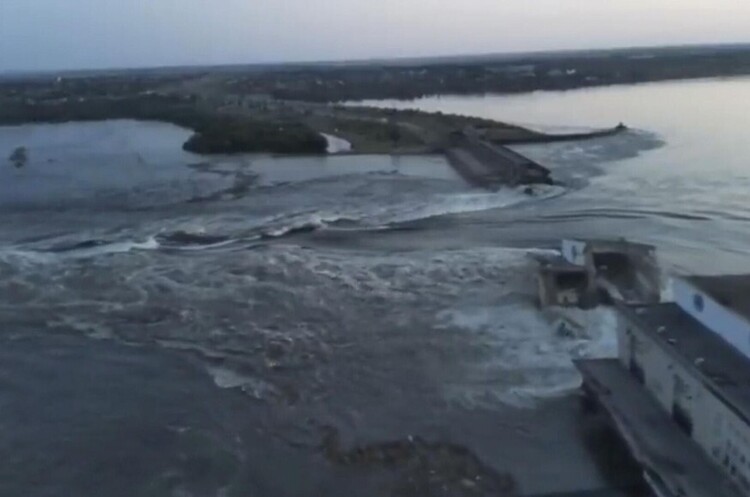NYT: Kakhovka dam was blown up by placing explosives in an internal tunnel
The plant was built in the Soviet era, and detailed blueprints are available in Moscow - and with their help, it's easy to find a vulnerable spot for a bombing

The Kakhovka dam was heavily damaged by fighting several months before the collapse. Ukrainian strikes had damaged one part of the road above the dam, and Russian troops later blew up another as they retreated. Last month, satellite images showed water flowing uncontrollably through some of the gates.
This led to speculation that the dam might have simply fallen victim to accumulated damage, a story that Russia has also been promoting to claim responsibility.
But numerous pieces of evidence reviewed by The New York Times, from original engineering plans to interviews with engineers who study dam failures, confirm otherwise: the dam collapse was not accidental. The catastrophic failure of the underlying concrete foundation was unlikely to have occurred by itself.
According to two U.S. engineers, based on satellite and seismic data on explosions in the area, the most likely cause of the collapse was an explosive charge placed in a maintenance corridor or gallery that runs through the concrete heart of the structure. This is confirmed by an explosives expert and a Ukrainian engineer with extensive experience in dam operations.
Moreover, the explosion was most likely deliberate: it occurred in the most vulnerable part of the structure – the tunnel that runs underwater through the concrete base of the plant and leads to the engine room.
Since the station was built in the Soviet years, its detailed drawings are available in Moscow – and with their help, it is not difficult to find the most vulnerable place for explosion, journalists note.
The powerful explosion was aimed at destroying the integrity of the foundation. After that, the parts of the dam located in the neighborhood collapsed on their own – under the tremendous water pressure.
"If your goal is to destroy the dam itself, you need a powerful explosion," said Michael W. West, a geotechnical engineer and expert in dam safety and failure analysis. – "The inner tunnel is an ideal place to place this explosive charge.
Background. As a reminder, international experts, citing intelligence data, claim that Russia is "very likely" behind the collapse of the dam in Nova Kakhovka.
If you have read this article to the end, we hope that means it was useful for you.
We work to ensure that our journalistic and analytical work is of high quality, and we strive to perform it as competently as possible. This also requires financial independence. Support us for only UAH 196 per month.
Become a Mind subscriber for just USD 5 per month and support the development of independent business journalism!
You can unsubscribe at any time in your LIQPAY account or by sending us an email: [email protected]



